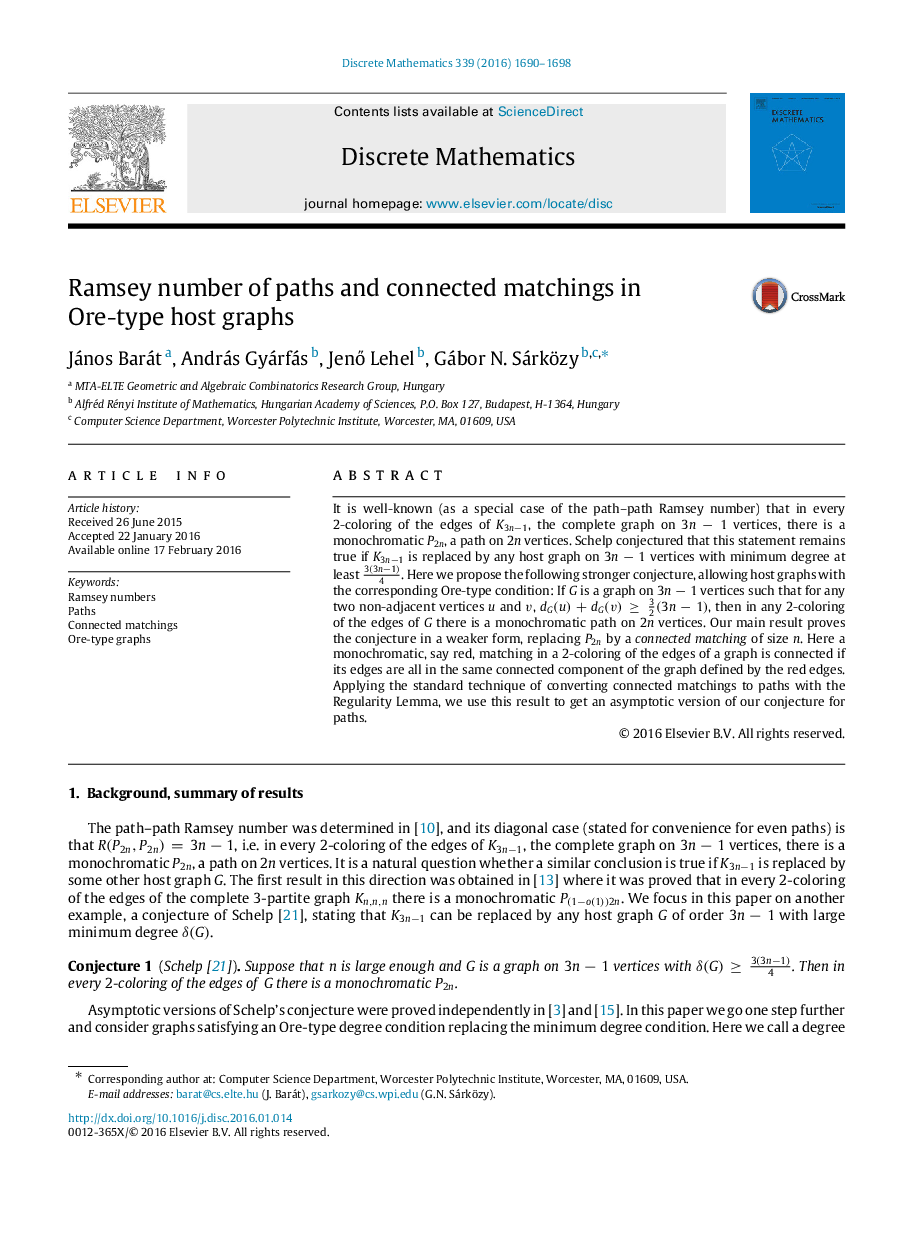| کد مقاله | کد نشریه | سال انتشار | مقاله انگلیسی | نسخه تمام متن |
|---|---|---|---|---|
| 4647055 | 1342325 | 2016 | 9 صفحه PDF | دانلود رایگان |

It is well-known (as a special case of the path–path Ramsey number) that in every 2-coloring of the edges of K3n−1K3n−1, the complete graph on 3n−13n−1 vertices, there is a monochromatic P2nP2n, a path on 2n2n vertices. Schelp conjectured that this statement remains true if K3n−1K3n−1 is replaced by any host graph on 3n−13n−1 vertices with minimum degree at least 3(3n−1)4. Here we propose the following stronger conjecture, allowing host graphs with the corresponding Ore-type condition: If GG is a graph on 3n−13n−1 vertices such that for any two non-adjacent vertices uu and vv, dG(u)+dG(v)≥32(3n−1), then in any 2-coloring of the edges of GG there is a monochromatic path on 2n2n vertices. Our main result proves the conjecture in a weaker form, replacing P2nP2n by a connected matching of size nn. Here a monochromatic, say red, matching in a 2-coloring of the edges of a graph is connected if its edges are all in the same connected component of the graph defined by the red edges. Applying the standard technique of converting connected matchings to paths with the Regularity Lemma, we use this result to get an asymptotic version of our conjecture for paths.
Journal: Discrete Mathematics - Volume 339, Issue 6, 6 June 2016, Pages 1690–1698